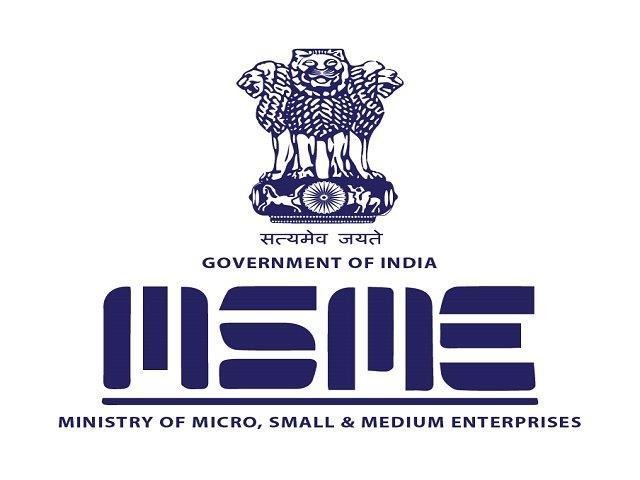Views shared by Dr Renu Singh Parmar, Former Senior Advisor, Ministry of Civil Aviation, Government of India
As I write this, the positive Covid cases in the country have gone upto 3374 with 77 deaths. Despite all the best efforts of the government, the situation we are in is likely to spiral out of control as some recent events have totally upset all optimistic calculations. These are:
- The urban to rural migration, witnessed in the near past, which has led to widespread misery and shortage of workers in factories, services, and other establishments, not to mention shortage of farm labour
- The Tablighi Jamaat congregation in Delhi and subsequent movement of the delegates to different parts of the country.
- The discovery of four Covid positive cases found in Asia’s largest slum cluster, Dharavi, which could be a ticking time bomb.
- The unavailability of proper preventive gear and security for doctors and nurses, other medical staff, and the increasing incidents of doctors and nurses reporting corona positive.
- The near total disruption of supply chains especially that of road and air transport.
What is the likely scenario for the economy as a direct result of the above incidents/situation? Will the pandemic spread unabated, especially in view of the first three points above? Will it be near to impossible to tackle the pandemic with frontline staff that are poorly equipped, fatigued and insecure and unsure of their safety? Will there be widespread shortages of food and consumer goods, as an outcome of workforce and labour shortage, closure of factories and severe disruption in the supply chain?
Unfortunately, the answer is yes, if appropriate opening up action is not taken. Of the total Covid positive cases in the country, around 30 percent can be traced down to the Tablighi congregation in Delhi. The mass migration of the workforce has effectively shut down all manufacturing establishments. Supply and demand have witnessed a steep decline, as a result. Prices of food items, fruits and vegetables have been rising, despite the contraction of purchasing power. More and more doctors and nurses and other medical staff are being quarantined after exposure to the disease. All this spells gloom for the prognosis of the disease as well as for the economy.
But is it possible to avoid a total disruption in the country? What strategies do we need to adopt to prevent or minimize this outcome? What can we learn from the selective methods adopted by certain countries like South Korea, Japan or Germany that have helped to, on the one hand contain the disease, and on the other, prevented a total economic collapse?
A Targeted Approach to the Exit
Do we need a trade off between lives and the economy /livelihoods or can both be managed together without seriously compromising the other? I think we can manage the latter.
The Government has identified 20 Covid hotspots and 22 potential ones in the country. The effort will be to contain the disease as far as possible, in these hotspots, through breaking the cycle of transmission, by intensive isolation and quarantine measures. This is a good move, but speed of containment is the key. The PM has announced his intention of a staggered exit from the lockdown on 14th April and has asked the Chief Ministers for suggestions on how best it can be done.
Clearly, the staggered exit will have to simultaneously take into account the need to kick start economic activities, to avoid the inevitable shortages and price rise of basic goods. One doesn’t have to look far to see what can work best . In Korea , when Covid 19 hit the country, apart from massive testing , the Koreans resorted to locking down only Daegu region that was affected, while allowing others to function partially, so as not to disrupt the entire economy . A similar parallel is the Hubei region in China. Japan and Germany also permit partial economic activity , while tackling the disease . This strategy , while focussing on the hotspots , allows for continuation of economic activities, which can ensure that the economies do not go into a tailspin , despite the steep deceleration in growth.
Can India also follow a targeted approach on hotspots while simultaneously allowing other regions of the country to function /partially function ? It is possible , despite the size of the country ? It is certainly doable ,I would say. The staggered exit will have to prioritize sectors /areas that 1) will ensure availability of essential goods 2) keep prices in check 3)effectively implement the selective exit, while containing the spread of the virus . Clearly, while tackling the containment of the disease, the Government will have to focus on maintaining the supply of essential consumer goods and services, and this can be done from regions that fall outside the Covid hotspots. The lockdown of the hotspots is inevitable . Unfortunately, however, the most affected regions(hotspots) are also those that have hitherto been the manufacturing hubs (located in Maharashtra, Tamil Nadu, Telangana, Delhi, Karnataka).Nevertheless, an exercise in identifying the possible areas/regions where production can be resumed, can be identified by each state government, and additional funds sought from the centre for bringing back the workers.
Right now the emphasis will have to be, apart from the containment of the disease, on ensuring that no food shortages occur . As of now we have a food grain stock of approximately 59 million tonnes in the FCI granaries, and if harvesting is done on time, despite lack of farm labour , a bumper foodgrain production of around 291 million tonnes can be expected, together with pulses production at 34 million tonnes. This would be more than sufficient to feed the masses through the PM Garib Kalyan Yojana and through the TPDS and other existing schemes like Antyoday, with enough surplus for the market. However, during the harvesting season , farmers are finding it difficult to get farm labour due to the mass migration. Many instances have come to light of farmers destroying their crop of fruits and vegetables due to disruption in the supply chain , and therefore inadequate procurement . Milk too is being disposed off by dairy farmers for the same reason. As a part of the exit strategy, the lockdown will have to be relaxed in the rural areas to ensure that the Rabi crop is harvested and procured in time . This relaxation would also enable the the production and distribution of milk, eggs , meat , fruits and vegetables. All associated supply lines will have to be relaxed and all backward (fertilizers ,seeds, feed,fodder, etc) and forward (procurement, storage and market related) linkages enabled. Basic agro processing sectors related to processing of food grains edible oils and milk products should also be prioritized in the exit strategy. However, because millions of migrant workers have moved to rural areas after job loss, some probably carrying the virus with them, widespread testing in these rural regions (of UP, Bihar, Orissa, MP, Chattisgarh and Jharkhand )will have to be done in the days before opening up.
The role of transport and logistics is fundamental , not only in regard to above activities but for the movement of essential goods across the country. They are the lifeline of the economy. All basic goods related procurement and distribution channels will have to be activated to prevent the kind of congestion witnessed recently. Needless to say, we will have to bring back the truck drivers with an assurance of safety and adequate income security. Special permits for Covid hotspots will have to be issued separately, while maintaining safety protocols . On a positive note cargo flights are already permitted to fly , but even passenger aircraft may be utilized for cargo movements(as already being done by Air India , Spicejet and Indigo) especially to the north east and the Andaman and Nicobar islands . Our waterways should also be exploited extensively for transportation of raw materials and foodgrains.
Obviously the pharma and chemicals sector, including medical devices and research will be an integral part of the staggered exit strategy. Unfortunately, the national lockdown has hit the sector as restrictions of movement has led to serious disruptions in the supply chain. Also , crucial raw materials (APIs) for production of critical drugs such as paracetamol, antibiotics , etc , which are majorly imported from China are in short supply. Currently , there are approximately 1500 plants in the country (Baddi, Hyderabad ,Pune ) that produce APIs, but at 40% of their capacities . This would be the right time to unshackle them from the lockdown restraints to enable them to gear up their production , especially when the prices of imported bulk drugs from China have gone up three fold in the last 2 months . Ramping up the capacity to produce ventilators and testing kits also needs to be backed up by enabling measures during the exit of the sector from lockdown.
However, other sectors of the economy, where the work from home option is not possible , like manufacturing and construction , will have to wait for a complete lifting of the ban. The clear priority for the government right now ,would be managing the availability and supply of basic goods to the people , more so for those in the unorganized sector. This can be done by adopting a selective, targeted approach : targeting the hotspots for containment and selecting the regions and sectors that can be brought under “staggered exit”.
The “trade off” between saving lives and saving the economy is no trade off, it is only a matter of how we can save both.





